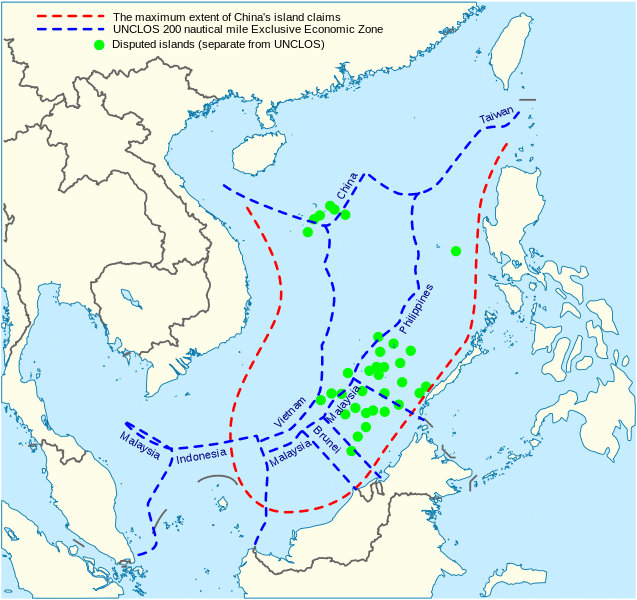From Sandboxx:
The U.S. Navy is working to counter China in the Pacific, but it could be the Air Force’s B-21 Raider that really shakes things up.

In recent years, the United States Navy has dramatically increased the frequency of Freedom of Navigation Operations (FONOPS) in the South China Sea. This increase in Pacific activity can be directly attributed to China’s aggressive behavior throughout the region, working to enforce their illegal claims of sovereignty over the heavily trafficked portion of ocean.
Power competition in the South China Sea
The South China Sea, a stretch of ocean that lies between Vietnam and the Philippines, is subject to numerous overlapping claims of ownership, many of which are backed by international law and commonly accepted norms. That is, except for China’s claim, which extends thousands of miles beyond the traditionally recognized economic exclusion zones each nation can claim within 200 miles of their coast, and is bolstered by both capturing and creating new islands in the region.

China’s claim over this region, they say, is backed by historical precedent, but international courts have ruled those claims to be unlawful. China has since responded by rapidly expanding its navy and bolstering the number of ships in both its Coast Guard and even its maritime militia. Combined, these forces offer China hundreds vessels in the region, many of which are used to physically deter other nations from access to large swaths of ocean. This behavior has forced Vietnamese workers off of oil rigs in their own territorial waters, pushed fishing firms out of their nation’s economic exclusion zones, and have created a significant amount of tension among Pacific powers, and even nations as far away as Europe.
That’s where Freedom of Navigation Operations come in. South China Sea FONOPs are voyages of military vessels through stretches of ocean that China considers their property, but that the rest of world recognizes as international waters. The United States and a number of other nations conduct these operations specifically to reinforce international norms, and to physically represent a dismissal of China’s illegal claims. However, as tensions between China and other global powers continues to mount, emerging hypersonic technologies promise to give China a seemingly indefensible advantage....
....MUCH MORE
As mentioned in "Sovereignty: 'All under Heaven, China’s challenge to the Westphalian system'"
When you have Chinese admirals saying stuff like:
“What the United States fears the most is taking casualties,” Admiral Lou declared.It is probably a good idea to remind said admiral, Lou Yuan, 20December2018, that another Asian power has already had a go at sinking American ships.
He said the loss of one super carrier would cost the US the lives of 5000 service men and women. Sinking two would double that toll.
“We’ll see how frightened America is.”
The admiral should probably also be reminded that there are 400 million people that live downstream of the Three Gorges Dam.
But first the U.S. would blind the Chinese satellites. Nowadays with lasers or some other sort of directed energy weapon but, if need be the navy can go old-school:
At approximately 10:26 p.m. EST today, a U.S. Navy AEGIS warship, the USS Lake Erie (CG-70), fired a single modified tactical Standard Missile-3 (SM-3) hitting the satellite approximately 153 miles (133 nautical miles) over the Pacific Ocean as it traveled in space at more than 17,000 mph.
That's some pretty fancy shootin' from a boat.